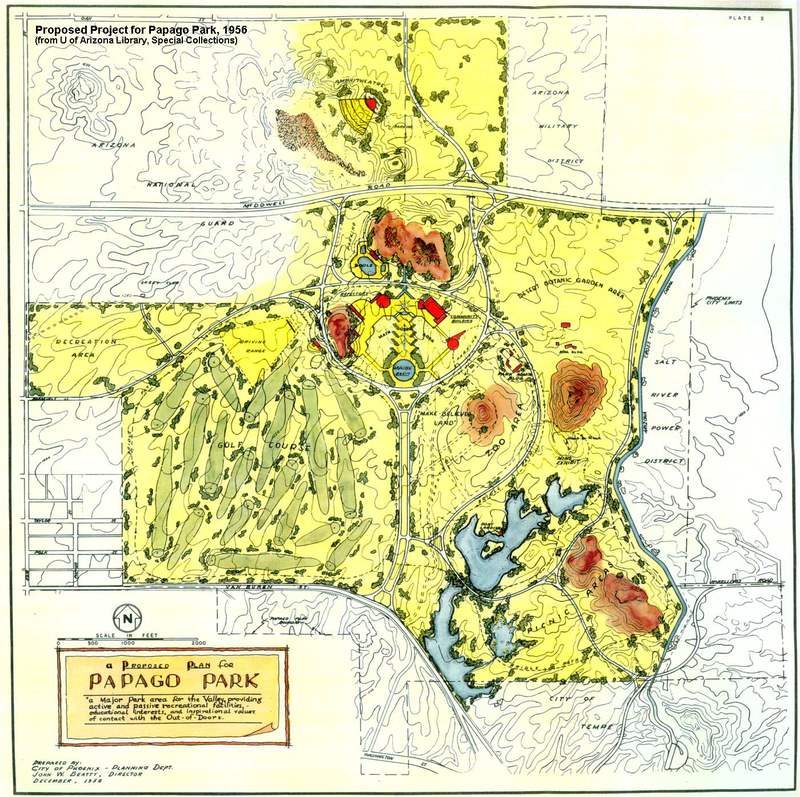
Wright's five million dollar design for the Arizona State Capitol never broke ground, but his legacy lives on in the Valley of the Sun.
Architect Frank Lloyd Wright saw great potential within the vast Sonoran Desert. The designer had just finished the designs of his renowned Usonian homes when he found himself deep within the McDowell Mountains of Arizona. In 1937, after ten years of exploring what architectural historian Edgar Kaufmann refers to as "his Arizona desert experiments," Wright constructed the National Historic Landmark Taliesin West.
Wright's passion for the desert landscape continued to influence the surrounding area beyond Taliesin West. Sixteen years after the winter home's inception, in February of 1953, American Institute of Architects Phoenix division speaker and architect Fred M. Guirey shared his desire to modernize the Arizona State Capitol by moving to Papago Park in Tempe, Arizona, during a Valley of the Sun Kiwanis Club's Hotel Westward Ho luncheon. That same month, Wright shared his agreement with the move at another meeting and in March of 1955 -- over two years later -- spoke again during a Phoenix Press Club meeting.
On January 25, 1957, the Arizona Republic carried a photograph of a new state capitol proposition. Lloyd Clark, a Phoenix Gazette reporter, shared the 20-story building design with Wright in an interview a month later. So dissatisfied with the initial design's "commonplace nature," Wright sketched the coup de grâce of organic, modern architecture without hesitation: The Oasis. Wright, typically outspoken, stated that "The cramped urban accommodations of the Nineteenth Century as now seen in the officially approved Capitol for Arizona should not be allowed to date the State. That design for the proposed Capitol is completely out of date in the middle of the Twentieth Century." By the end of the month, Wright submitted his offer to design the Capitol and prepared 20,000 promotional fliers, distributing them to over 91 high schools in the surrounding area.
Wright described his $5 million design as,
"A high, wide, sheltering crenellated-canopy of modern structure - like a great tree, filtering sunlight over subordinate but beautiful buildings and gardens standing together beneath the canopy in harmonious relation to this hexagonal domed shelter and to each other. All stand beneath and together in green gardens, fountains playing, pools reflecting. Great vistas of beauty are everywhere: useful function perfected no less – but more so when thus sheltered and standing high and wide in Arizona landscape out in the Valley of the Sun."
Regardless of Wright's intentions, the public pushed back against the highly modern design and move to Papago Park, noting that "Mr. Wright can take no credit for pioneering in this state, nor helping to bring civilization to Arizona. Just because Mr. Wright and his friends have seen fit to invest in this Valley does not give them a license to remake the Valley just to suit them." The Arizona Republic ran an opinion column in July stating, "almost no one outside of the legislature favors the two-wing plan." Ultimately, Wright's two-wing capitol plan lost the bid, and in late August, the Capitol Building and Planning Commission broke ground on the vastly different design present today.
Although the Oasis lost its public campaign, Wright's desire for authentic regional modern architecture continued in the Valley with the production of Grady Gammage Memorial Auditorium in Tempe, Arizona -- Wright's last large, nonresidential project before his death on April 9, 1959 in Phoenix, Arizona. In 2004, a defining piece of the Wright's state capitol rose in the Promenade shopping center in Scottsdale, Arizona: a 125-foot tall glowing turquoise spire. With the inclusion of the Frank Lloyd Wright Spire in the local framework, the architect's legacy no longer only resides in the McDowell Mountains. Including a tangible piece of the architect's magnum opus anchors Wright to the Valley and emphasizes how truly monumental his presence was in the historical record.
Video
Images



